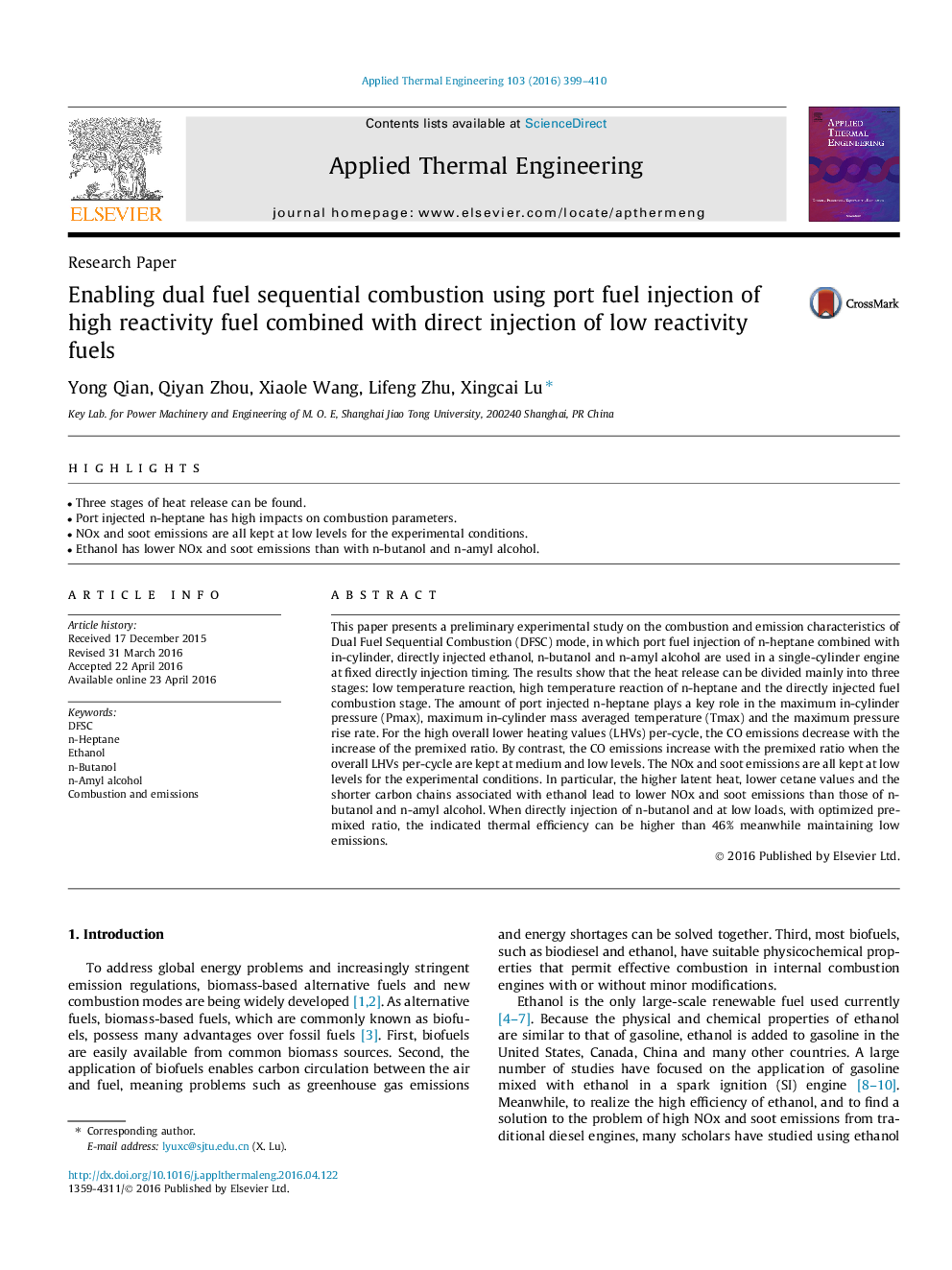| Article ID | Journal | Published Year | Pages | File Type |
|---|---|---|---|---|
| 7047710 | Applied Thermal Engineering | 2016 | 12 Pages |
Abstract
This paper presents a preliminary experimental study on the combustion and emission characteristics of Dual Fuel Sequential Combustion (DFSC) mode, in which port fuel injection of n-heptane combined with in-cylinder, directly injected ethanol, n-butanol and n-amyl alcohol are used in a single-cylinder engine at fixed directly injection timing. The results show that the heat release can be divided mainly into three stages: low temperature reaction, high temperature reaction of n-heptane and the directly injected fuel combustion stage. The amount of port injected n-heptane plays a key role in the maximum in-cylinder pressure (Pmax), maximum in-cylinder mass averaged temperature (Tmax) and the maximum pressure rise rate. For the high overall lower heating values (LHVs) per-cycle, the CO emissions decrease with the increase of the premixed ratio. By contrast, the CO emissions increase with the premixed ratio when the overall LHVs per-cycle are kept at medium and low levels. The NOx and soot emissions are all kept at low levels for the experimental conditions. In particular, the higher latent heat, lower cetane values and the shorter carbon chains associated with ethanol lead to lower NOx and soot emissions than those of n-butanol and n-amyl alcohol. When directly injection of n-butanol and at low loads, with optimized premixed ratio, the indicated thermal efficiency can be higher than 46% meanwhile maintaining low emissions.
Related Topics
Physical Sciences and Engineering
Chemical Engineering
Fluid Flow and Transfer Processes
Authors
Yong Qian, Qiyan Zhou, Xiaole Wang, Lifeng Zhu, Xingcai Lu,
